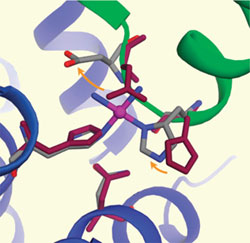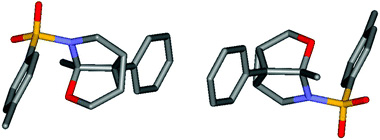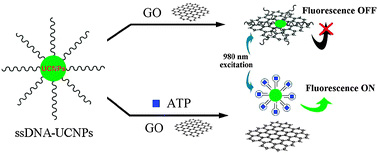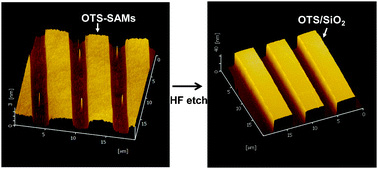 |
Two dumbbell-shaped polymorphs possess similar packing arrangements, but one shows anomalously anisotropic thermal expansion while the other does not.
Leonard J. Barbour and his team from the University of Stellenbosch, in South Africa and a co-worker from the Polish Academy of Sciences, have investigated these polymorphs further and discovered that by adjusting the molecular stacking angle by approximately 10° effectively disables the molecules’ ability to undergo thermal expansion. Fancy expanding your knowledge? Then why not download the ChemComm communication today and read all about the teams research results? This article is free to access until Friday 3rd June. |
Author Archive
To expand or not to expand?
Anticancer drug found to cause zinc deficiency
Cisplatin is responsible for abnormally low zinc levels in patients undergoing chemotherapy, say scientists in China and the UK.
Platinum-based compounds, like cisplatin, are the most widely used anticancer drugs in medicine. Research shows that up to 98 per cent of cisplatin binds to blood plasma proteins, particularly albumin. Until now, little has been known about the specific binding sites for platinum on albumin. ‘Since albumin plays a major role in cisplatin metabolism, a better understanding of its interactions with albumin should lead to more effective use of the drug and avoidance or control of side effects,’ says Peter Sadler from the University of Warwick, in the UK.
| Together with Fuyi Wang’s team from the Chinese Academy of Sciences in Beijing, Sadler used mass spectroscopy techniques to reveal that cisplatin reacts with recombinant human albumin (rHA) to create a cisplatin-rHA adduct. The platinum occupies zinc binding sites on the albumin, displacing the zinc, which causes hypozincemia (lack of zinc for metabolic processes) and hyperzincuria (increased zinc in urine).
Would you like to know more? Then read the full story on the Chemistry World website and download the ChemComm communication. |
A touch of gold for cycloisomerisation reaction
Gold-catalysed cycloisomerisation of alkynyl hydroxyallyl tosylamides has led to the concise synthesis of oxaazatricyclic compounds and revealed an interesting skeleton structure, say scientists in South Korea.
Research groups across the globe have reported cycloisomerisation reactions of alkynyl allyl alcohols (AAAs) with rhodium, iridium, palladium and nickel catalysts. Naturally, research groups have been led into investigating the use of gold catalysts, providing plausible reaction pathways for these reactions.
Young Keun Chung and colleagues from Seoul National University and Sangmyung University, used subtly different reaction conditions than have been previously reported, resulting in an usual oxaazatricyclic skeleton compound being uncovered for the first time, as shown in the X-ray structure obtained below.
To find out more about this unexpected result and the reaction conditions used, why not download the communication today? The results have been published in ChemComm and will be freely available until the 13th May 2011!
Unique sorption properties for isomeric frameworks
Two porous supramolecular isomeric frameworks have shown unique sorption properties, say a collaboration of Chinese and Japanese scientists.
One framework shows temperature dependent and selective sorption of CO2, while the other framework shows gas uptake capacity for CO2, N2, H2 and CH4 at low temperature and selective sorption of CO2 over N2 around room temperature. Wei-Yin Sun and colleagues believe that the results provide useful guidance for improving metal organic framework (MOF) designs for gas storage and separation techniques.
All systems GO for biosensing platform
Graphene oxide (GO) plays a crucial role in a new, sensitive biosensing platform, acting as an efficient quencher for upconversion nanophosphors, say scientists in China.
Zhengping Li, Chenghui Liu and colleagues from Hebei University, have constructed a sensitive and practical biosensing platform by combining lanthanide-doped upconversion nanoparticles (UCNPs) with single-stranded DNA (ssDNA). Upon the addition of water soluble GO the upconversion fluorescence is quenched, effectively turning ‘off’ the fluorescence signal. To test the platforms sensing ability and performance, the team introduced adenosine triphosphate (ATP) resulting in the formation of an aptamer-ATP complex, preventing the UCNPs interacting with the GO surface and thus decreasing the quenching efficiency, resulting in the fluorescence staying ‘on’. Other phosphates were tested, like guanosine triphosphate (GTP), cytidine triphosphate (CTP) and uridine triphosphate (UTP) but no dramatic fluorescence enhancement was observed, so this indicates that the aptamer system is specific to ATP alone.
Interestingly, the team also tested the biosensing platform with mercury ions, which caused the ssDNA to form double-stranded DNA (dsDNA), preventing the UCNPs interacting with the GO surface and again resulted in enhanced fluorescence emission. Other similar cations were tested in comparison, but the biosensor only shows selectivity for mercury ions, providing a good indication into the high specificity that this biosensing platform has, in addition to its future potential for uses in clinical diagnostic and biosensing applications.
Fancy finding out more? Then why not download the communication today – published in ChemComm, the article has been made free to access until the 13th May 2011.
Please also let us know what you think to this research by blogging some comments below.
Reusable template for pattern transfer
Contact area lithography has been used for directly patterning and transferring self-assembled monolayers (SAMs) onto silicon-based substrates.
Hyunjung Shin and colleagues from Kookmin University, in South Korea used a patterned (hard) silicon oxide template and placed it on substrates of interest, introducing a small amount of water in the process.
After drying off the water, the non-contacted areas served directly as growth sites of OTS-SAMs by simple solution deposition. The hard template was then detached from the substrate and the patterns of SAMs were obtained.
In principal, the hard template is cleansable by simple chemical etching without causing any damage. It is also 100% recyclable and can be reused up to ~50 times.
Fancy finding out more about this technique? Then why not download the communication today, which has been published in ChemComm and will be free to access until the 13th May 2011.
Beads clicking into place
Scientists in Belgium have designed a microfluidic setup that manufactures thiol and yne beads, which can then undergo several click-type reactions.
Filip Du Prez and his team at Ghent University demonstrated the yne beads reacting with an azide or two thiols, whereas the thiol beads were tested using nine different reaction conditions. The thiol–isocyanate reaction was seen to be the fastest, being closely followed by the thiol–norbornene reaction.

Light Microscopy image of monodisperse thiol beads (left image). Fluorescent yne beads after clicking with coumarin-derivative (right image).
Du Prez believes that this discovery may help to guide researchers, especially in the field of solid phase synthesis, to choose the most suitable ligation reaction according to their needs since many of the conjugations studied are part of the click family.
Published in ChemComm this communication will be freely available until the 13th May 2011. Why not download the communication today and find out more about the beads and their clicking abilities?
Confining supramolecular soft materials
Xiang Yang Liu and collaborators showed that the formation of fibre networks under volume confinement is independent of temperature and solute concentration. They need to do more studies to understand the mechanism but say that their work should help scientists design new soft functional materials on a micro-/nanometre scale.
Fancy delving some more into the results reported? Then why not download the communication* today and leave some comments on the blog below. Perhaps you have a question for the authors, or you could tell us what you found interesting about these results.
*This communication will be free to access until the 25th March 2011.


















